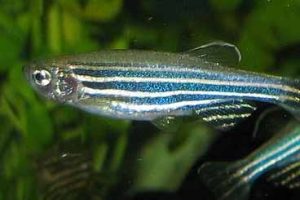Could humans regenerate from heart problems like the zebrafish?
FAU researchers are investigating new approaches that can be used in the treatment of heart disease
Nearly 40 million patients worldwide currently suffer from impaired cardiac function, also known as heart failure. Despite advances in the prevention and minimisation of cardiac damage, the number of people who suffer from heart failure continues to rise. The main cause of heart failure is the loss of cardiac muscle cells (cardiomyocytes) so that patches of heart tissue become necrotic, for example due to insufficient blood perfusion following a heart attack. What is particularly worrying for those affected is that there is currently no treatment that can reverse the loss of heart muscle cells. While investigating factors which could potentially stimulate human cardiomyocyte proliferation, researchers at FAU identified a molecule which activates a specific receptor in the cell nucleus. This was found to improve cardiac function in the mouse myocardial infarction model. Their findings have been published in ‘Cell Research’, a leading journal produced by the Nature Publishing Group.
The natural world has produced some quite remarkable animals. Take the zebrafish, which unlike humans, can regenerate its heart. Zebrafish, which are only a few centimetres in size, are often used as ornamental fish in aquariums and are one of only very few species with this ability. When the heart muscle of zebrafish is damaged, the remaining cells begin to divide to heal the injury. In humans, on the other hand, only scar tissue forms; indeed, human heart cells have a limited capacity for regeneration (in fact, this occurs in mammals only during embryonic development) while the heart does not seem to contain stem cells which could generate a sufficient number of new cardiomyocytes.
However, recent findings have shown that newborn mice and rats can also generate new heart muscle cells. ‘This could even be the case in a small number of human heart muscle cells,’ suggests Prof. Dr. Felix Engel, head of the research team and Professor of Experimental Renal and Cardiovascular Research in the Department of Nephropathology at Universitätsklinikum Erlangen. ‘We have been able to demonstrate in animal models that even adult mice have the ability to regenerate cardiomyocytes,’ adds Engel. Working on the assumption that the capacity for the regeneration of heart muscle cells is retained in adult mammals, Engel and his team investigated this mechanism and the related factors. They enrolled the help of colleagues from the University of Ulm and the University of Alabama at Birmingham to study the response of the cardiomyocytes of neonate rats to various chemical compounds in a large-scale screening procedure.
Engel and his team thus identified carbacyclin as a possible cardiomyocyte growth factor. Carbacyclin is a synthetic analogue of naturally occurring prostacyclin which improves blood perfusion in various tissues. As subsequent studies have shown, carbacyclin activates PPARδ, a hormone receptor present in the nuclei of almost all human tissue cells. The researchers showed not only that such activation is necessary for efficient heart regeneration in zebrafish, but also that PPARδ can induce proliferation of both rat and human cardiomyocytes. Furthermore, Engel’s research team also found that stimulation of the PPARδ receptor in the mouse model of myocardial infarction not only improves heart function, but also reduces scar formation.
‘It therefore seems that it might be possible to induce cardiac muscle cell proliferation in mammals by using drugs to manipulate signalling pathways,’ Engel goes on to explain. This could thus constitute a promising new approach for the treatment of cardiovascular disease associated with the loss of heart muscle cells. According to Engel, the long-term goals of the research project are to understand the mechanisms which control heart growth and to identify further pathways using which it may be possible to increase the number of heart muscle cells, limit cardiac damage and restore heart function.
The research findings have been published in ‘Cell Research’ under the title ‘Live cell screening platform identifies PPARδ as a regulator of cardiomyocyte proliferation and cardiac repair’ (DOI:10.1038/cr.2017.84).
Further information:
Prof. Dr. Felix Engel
Phone: +49 9131 85 25699
felix.engel@uk-erlangen.de
